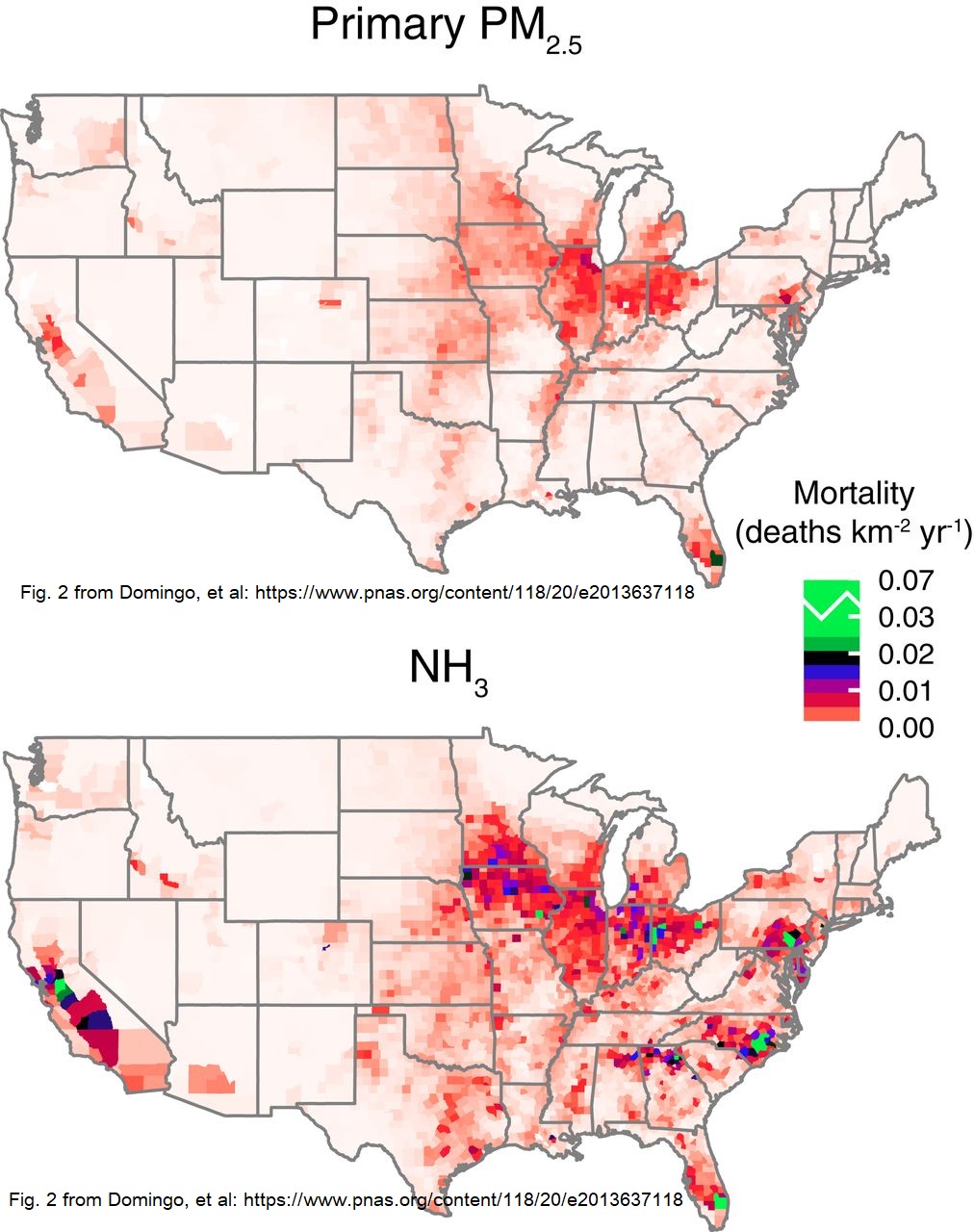The Washington Post reports on a new study that shows that air pollution from agricultural sources results in almost 18,000 deaths each year in the U.S. That compares to 47,000-70,000 deaths each year from burning fuel for power production and heating from coal, gas, wood, and biomass. The study was published in the Proceedings of the National Academy of Science.
Here in the Southeast, there were areas strongly affected by agricultural air pollution, including central Mississippi, northern Alabama, northern and northeastern Georgia, central and eastern North Carolina, and central and southern Florida.
The researchers found that the biggest impact was from red meat, followed by eggs, dairy, and poultry. The impact from animals included actual air pollution from raising animals, as well as the impact from growing feed for the animals.
They found that two areas of change could reduce deaths quite a lot – agricultural and consumer dietary changes. Changing livestock waste management and how fertilizer is applied, along with changing tilling practices, burning, and equipment emissions could prevent almost 8,000 deaths per year. If people eat poultry instead of red meat it could prevent 6,300 deaths per year, or if people eat flexitarian (several vegetarian meals a week), vegetarian, or vegan, it could prevent 11,000-13,000 deaths per year.
The researchers analyzed fine particulate air pollution (PM2.5), which can be directly emitted and also forms from precursors such as ammonia (NH3), nitrogen oxides (NOx), and sulfur dioxide (SO2).
Read the news article in the Washington Post.
Read the scientific article in PNAS.
05/12/2021





